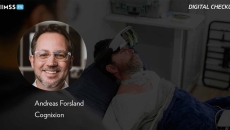Patient Access
The U.S. Department of Veterans Affairs seeks to develop new ways to provide healthcare for vets and their families, says HIMSS25 Changemaker Awardee Dylan Tête, director of business development for Red Duke Strategies, which works with the VA.
Cognixion has created a non-invasive brain-computer interface that works alongside AI and augmented reality to help ALS and traumatic brain injury patients communicate. Andreas Forsland, CEO and cofounder, offers a deep dive.
AI-powered remote monitoring using low-cost, disposable sensors can help VA clinicians spot potential issues and intervene to encourage veteran patients to stay compliant, says Kent Dicks, CEO of Life365.
While healthcare organizations applaud lawmakers' support for extending flexibilities in FY25 stopgap legislation, they still have concerns about long-term certainty for virtual care.
Remote Patient Monitoring
The connected care leader at Philips explains how remote patient monitoring tech can combat hospitals' and health systems' problems with patient retention and overall capacity.
Also, the NSW government has launched a free virtual urgent care service in Sydney.
Much-needed virtual care to underserved Indigenous communities is in development in the Whitecap Dakota First Nation, reports Ivar Mendez, director of Canada's Virtual Health Hub.
Cybersecurity In Focus
More tech companies, and the government, are needed to address rural healthcare cyberattacks, according to the new Microsoft rural hospital cybersecurity landscape report.
Expectant parents in Arkansas will have access to state resources aimed at improving health literacy and adopting healthy habits.
If the DEA's role is not properly limited, there could be an overreach where the agency influences or even dictates how healthcare practitioners make decisions, which could impact patient care, says Dan Cohen, president of RTM company Adhere+.








